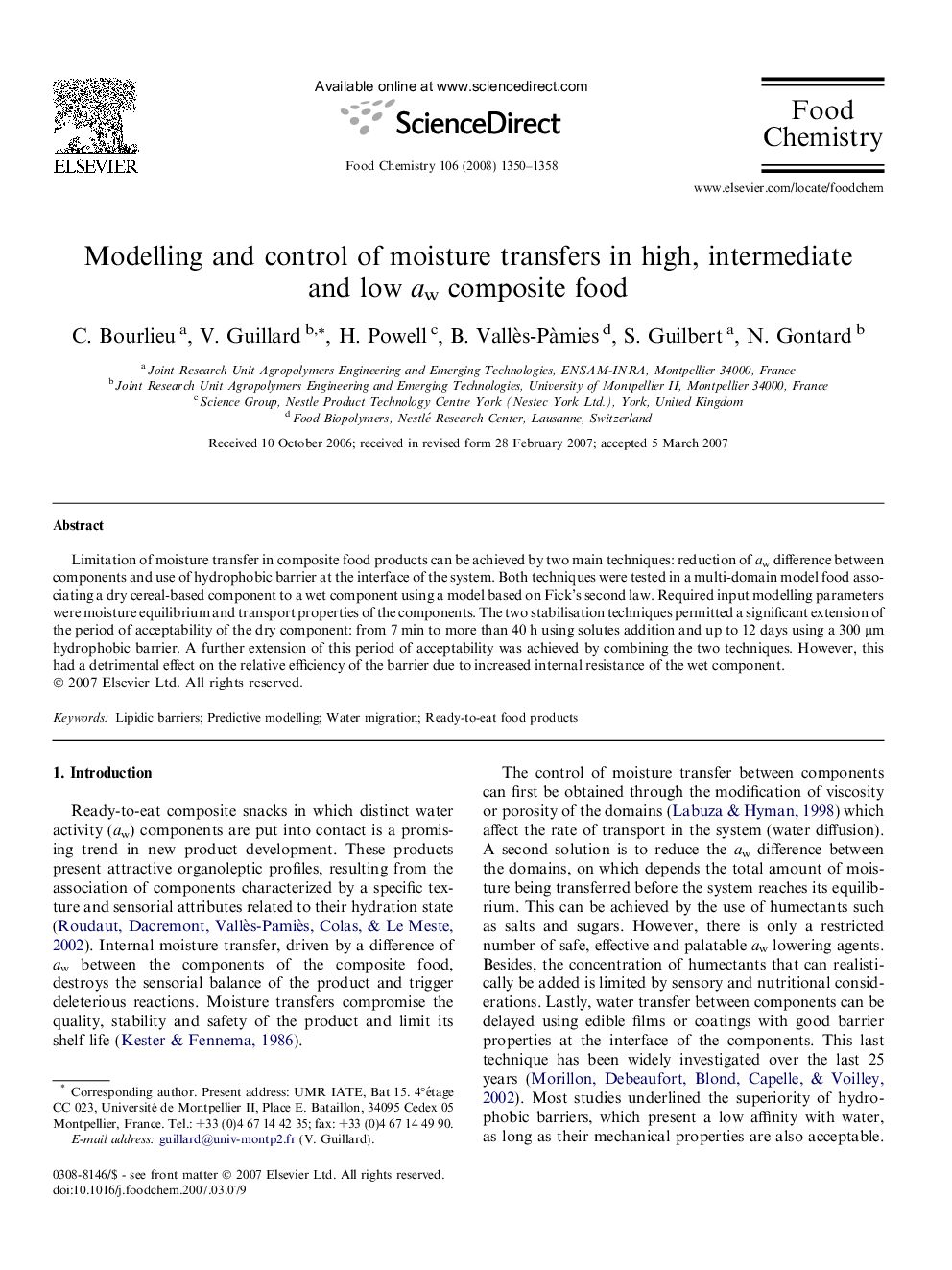| Article ID | Journal | Published Year | Pages | File Type |
|---|---|---|---|---|
| 1187427 | Food Chemistry | 2008 | 9 Pages |
Limitation of moisture transfer in composite food products can be achieved by two main techniques: reduction of aw difference between components and use of hydrophobic barrier at the interface of the system. Both techniques were tested in a multi-domain model food associating a dry cereal-based component to a wet component using a model based on Fick’s second law. Required input modelling parameters were moisture equilibrium and transport properties of the components. The two stabilisation techniques permitted a significant extension of the period of acceptability of the dry component: from 7 min to more than 40 h using solutes addition and up to 12 days using a 300 μm hydrophobic barrier. A further extension of this period of acceptability was achieved by combining the two techniques. However, this had a detrimental effect on the relative efficiency of the barrier due to increased internal resistance of the wet component.
